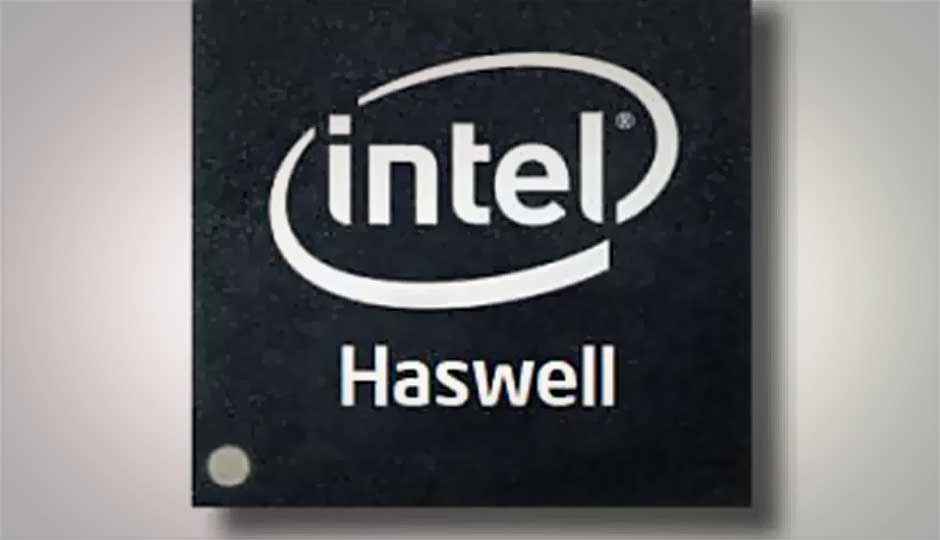Intel launches ‘Haswell’ fourth generation of Intel Core processors in India

Intel today introduced its fourth generation of Core processors in India. Notebooks powered by the new chipset will hit store shelves as early as the first week of July for a price tag as low as Rs. 37,000.
Intel’s fourth generation processors also known as Haswell have been generating interest ever since they were showcased at Computex 2013. Based on Intel’s 22nm microarchitecture, the company claims that this generation of Core processors delivers up to 50 percent increase in battery life in active workloads over the previous generation. This is the largest generation-over-generation gain in the company’s history, equating to 9 hours of battery life in active workloads for some Ultrabooks based on the new processors. The Haswell processors will also serve as the foundation for a new era of 2-in-1 computers- devices that work as both a PC and a tablet.
The new Ultrabooks as well as 2-in-1 devices, powered by the fourth gen Core processors are targeted at people for whom mobile computing is important. Intel claims that the Haswell processors are capable of delivering up to 15 percent better performance than the previous generation while consuming lower amounts of power.
“Today we deliver on the vision set forth 2 years ago to reinvent personal computing with the introduction of our fourth generation of Intel Core processors,” said Leighton Phillips, Director, Product Management & Pricing of Intel for the Asia-Pacific region. He continued, “Today’s announcement accelerates a new category of 2-in-1 computing devices delivering the best of a notebook and a tablet in amazing new form factors.”
We had some time to question Leighton Phillips on what Intel had to say about the new generation of processors. You can watch the interview below:
Speaking at the launch, Debjani Ghosh, Managing Director, Sales and Marketing Group of Intel for South Asia said, “The fourth generation Intel Core processors offer the most significant gain in battery life ever achieved by Intel, up to double the graphics and significant CPU performance improvements that will deliver an exciting user experience. Improvement have been made keeping in mind the user’s needs and requirements of a power efficient, high performance device.”
According to Intel, the fourth gen Core processors deliver up to a 50 percent improvement in battery life over the previous generation in active workloads such as watching movies or surfing the Internet, and two to three times improvement in standby battery life. For some systems coming to market this year, over 9 hours of active use battery life or 10 to 13 days of standby with fresh data on a single charge is expected.
To achieve this, Intel claimed that it worked on improvements that reduced power requirement at the CPU level to as low as 6 watts and also worked across the system for power optimization. These improvements range from System-on-a-Chip (SoC) and platform level technologies to Intel’s leading-edge 22nm process technology.
Intel also claimed that the fourth generation Core processors combine the performance of today’s processors with the additional benefit of superior graphics support. The company said that users would be able to see everyday computing speeds double; systems would wake up approximately eight times faster and users would have the ability to edit and share HD video about 20 times faster, than on a similar 4-year-old computer.
Intel has also expanded its range of Intel graphics in the integrated SoC to improve visuals in thinner and lighter devices. Intel Iris graphics, available on select SKUs of the fourth Gen Intel Core processor family, is claimed to deliver up to double the 3D performance over today’s fastest mobile Intel HD Graphics solutions. We will of course put this claim to the test once we get notebooks powered by the fourth generation processors in for review.
Making India future-ready with perceptual computing
With the introduction of “perceptual computing” Intel says that the technology allows people to interact with their computing devices by using gestures, expressions, and language that humans use with each other. “We need to make technology less intimidating and allow people to interact with devices in a more natural way. We see a future in this space with perceptual computing and are committed towards its integration across various applications that help in fields like education and healthcare” said Debjani Ghosh.
We also had a chat with Abhinav Aggarwal, CEO of TRUTECH, whose company is working closely with Intel to bring perceptual computing to consumers. Check out our interview below:
